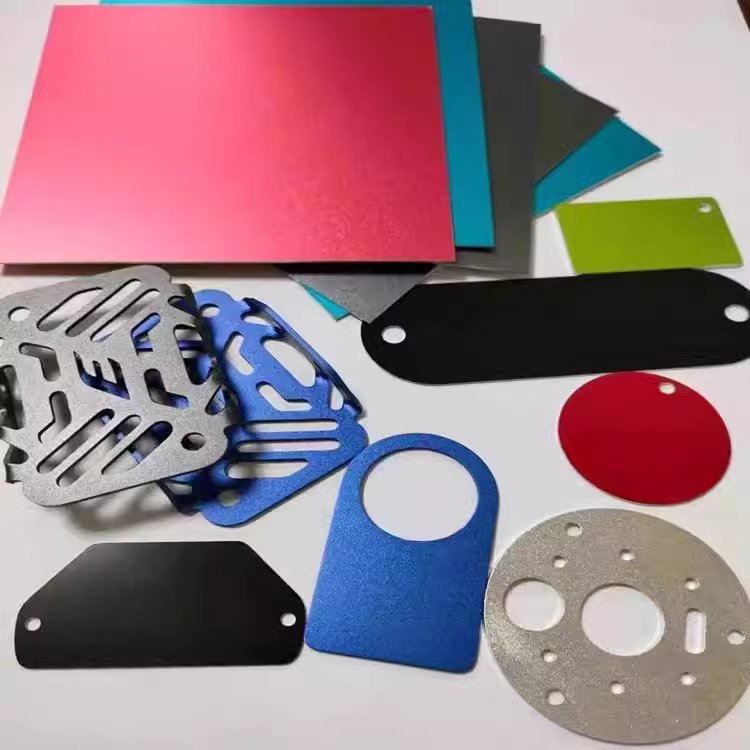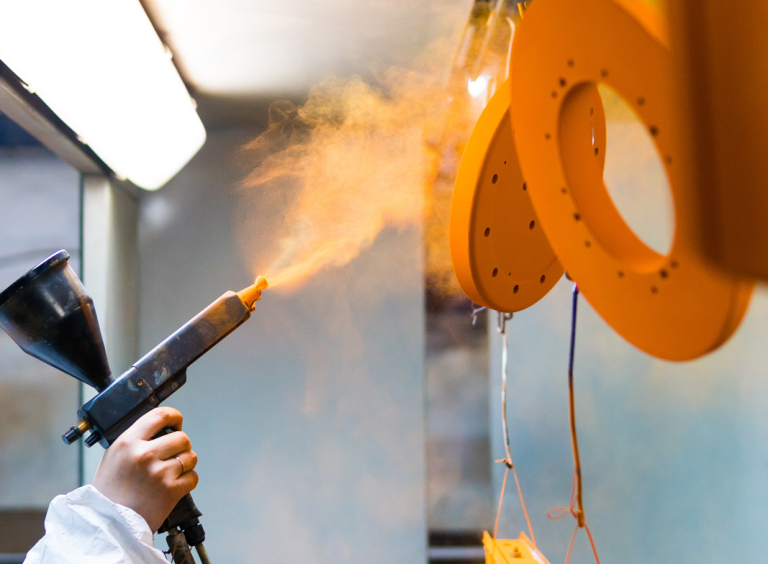
In the world of manufacturing and engineering, metal surface treatments play a crucial role in improving the functionality, durability, and appearance of metal components. These treatments are not merely cosmetic; they are integral to ensuring that metals perform optimally under various conditions and meet specific application requirements. This article explores the essential metal surface treatment methods, their purposes, and their applications.
What is Metal Surface Treatment?
Metal surface treatment is a process applied to the surface of metal materials to improve their properties or appearance through physical, chemical, or electrochemical methods. These treatments can enhance metal’s corrosion resistance, wear resistance, oxidation resistance, adhesion, and aesthetic qualities, and can also provide specific functionalities such as conductivity or antimicrobial properties.
Purpose and Effects of Metal Surface Treatment
Enhancing Corrosion Resistance:
- Purpose: To protect metals from oxidation, moisture, and chemical corrosion.
- Methods: Includes electroplating, chemical plating, phosphating, and anodizing.
Increasing Wear Resistance:
- Purpose: To improve the metal surface’s ability to resist wear and extend service life.
- Methods: Includes thermal spraying, hardening treatments, and coatings.
Improving Appearance:
- Purpose: To enhance the visual appeal of metal parts, meeting aesthetic design requirements.
- Methods: Includes painting, anodizing, and electroplating.
Enhancing Adhesion:
- Purpose: To improve the adhesion of coatings, adhesives, and other materials to metal surfaces.
- Methods: Includes phosphating and sandblasting.
Providing Functional Properties:
- Purpose: To endow metal surfaces with specific functions, such as conductivity or antimicrobial properties.
- Methods: Includes electroplating, chemical plating, and passivation.
Common Metal Surface Treatment Methods

Metal Surface Treatment is a crucial step in ensuring the functionality and durability of metal parts. Common surface treatment methods include:
Sandblasting
- Overview: Uses high-pressure airflow to blast abrasive particles onto the metal surface to remove rust, oxides, and old coatings.
- Application: Typically used for cleaning metal surfaces and preparing them for subsequent treatments.
Electroplating
- Overview: Uses an electrochemical process to deposit a layer of metal onto the base metal surface to enhance corrosion resistance and appearance.
- Application: Used to improve the metal’s corrosion resistance, hardness, or decorative effect. Common coatings include nickel, chromium, and gold.
Chemical Plating
- Overview: Deposits a metal coating onto the base metal surface through a chemical reaction without the need for electrical current.
- Application: Commonly used for coating irregularly shaped or large-area metal parts.
Anodizing
- Overview: Forms a layer of aluminum oxide on the surface of aluminum alloys through an electrolytic process, enhancing corrosion resistance and hardness.
- Application: Widely used for surface treatment of aluminum alloy parts to increase both aesthetic appeal and durability.
Coating
- Overview: Applies a coating material (such as paint or powder coating) to the metal surface for protection or decoration.
- Application: Used to improve appearance, corrosion resistance, and wear resistance. Common coatings include powder coatings and liquid paints.
Electrophoretic Coating
- Overview: Deposits charged coating particles onto the metal surface using an electric field.
- Application: Provides an even coating, commonly used in the automotive and household appliance industries.
Thermal Spraying
- Overview: Melts coating materials at high temperatures and sprays them onto the metal surface to form a protective layer.
- Application: Used to enhance wear and corrosion resistance, often for repairing and protecting equipment.
Phosphating
- Overview: Forms a phosphate layer on the metal surface to increase adhesion and corrosion resistance.
- Application: Used to improve coating adhesion, commonly applied as a pre-treatment for steel parts.
Passivation
- Overview: Creates a protective film on the metal surface through a chemical reaction to enhance corrosion resistance.
- Application: Widely used on stainless steel and aluminum alloys to prevent rust and corrosion.
Deburring
- Overview: Removes sharp edges and burrs created during metal machining processes.
- Application: Improves the safety and functionality of parts, commonly used after mechanical processing.
These surface treatment methods can be used individually or in combination to achieve the best metal surface performance. The choice of the appropriate treatment method typically depends on the type of metal, its intended use, and the required performance characteristics.
Factors to Consider When Choosing a Metal Surface Treatment Method
Selecting the appropriate metal surface treatment method is crucial for ensuring the performance, longevity, and appearance of metal parts. The following factors should be considered:
Type and Nature of Metal
- Type of Metal: Different metals (such as steel, aluminum, stainless steel, copper) respond differently to various surface treatment methods. For example, aluminum alloys are often treated with anodizing, while steel might require phosphating or electroplating.
- Alloy Composition: The composition of the alloy can affect the effectiveness and choice of surface treatment. Certain alloys may not be suitable for electroplating or thermal spraying.
Operating Environment
- Corrosive Environments: For parts exposed to corrosive environments, such as marine or chemical settings, treatments providing excellent corrosion resistance, like electroplating or coating, are needed.
- Mechanical Wear: For parts subject to frequent friction or contact, treatments that offer high wear resistance, such as thermal spraying or hardening, should be considered.
Functional Requirements
- Corrosion Resistance: If the metal part needs protection from oxidation and corrosion, treatments like electroplating, phosphating, or anodizing are appropriate.
Aesthetic Requirements: For parts requiring a specific look, treatments like coating, anodizing, or electroplating can provide a variety of colors and finishes. - Adhesion: For applications requiring coating or bonding, methods that enhance coating adhesion, such as sandblasting or phosphating, are important.
Cost and Budget
- Treatment Costs: Different methods have varying costs. For instance, electroplating and anodizing are typically more expensive, while sandblasting and chemical plating may be more cost-effective.
- Production Scale: For large-scale production, balancing cost and efficiency is important. For example, powder coating is suitable for high-volume production but may involve higher initial equipment investment.
Complexity of the Process
- Process Requirements: Some methods require complex process controls and equipment, such as electroplating and thermal spraying, while others like sandblasting and coating are relatively simpler.
- Part Shape and Size: Complex shapes and large parts might need special treatments or equipment. For example, chemical plating is suitable for irregular shapes, while electroplating might have more stringent size and shape requirements.
Environmental and Safety Considerations
- Environmental Regulations: Some treatments involve hazardous chemicals or waste management, such as electroplating. Environmental regulations and safety requirements need to be considered.
- Operational Safety: The chosen method should ensure operational safety and comply with industry safety standards.
Long-Term Maintenance and Durability
- Durability: The selected treatment method should provide long-term durability and stability to minimize maintenance costs.
- Repair and Rework: Consider the difficulty of repairing or reworking the surface treatment. Some methods may be more challenging to fix or replace if damaged.
By considering these factors, you can select the most suitable metal surface treatment method to meet performance, cost, and aesthetic requirements effectively.
Explore Cutting-Edge Precision Metal Solutions with TOPFAST CNC
Guangzhou Topfast Technology Co., Ltd is a leading manufacturer specializing in rapid prototyping & on-demand production.
With state-of-the-art machines operated by engineers who are unmatched in skills and experience, we offer CNC machining, injection molding, vacuum casting, die casting, 3D printing, sheet metal fabrication, and more.
We are certified in ISO9001, ISO16949, and ISO13485, reflecting our commitment to innovation and improvement.
Our capabilities ensure customers bring ideas to life in no time, providing comprehensive one-stop solutions from prototyping to mass production. Flagship always delivers quality custom parts with precision and efficiency while saving your time, cost, and effort.